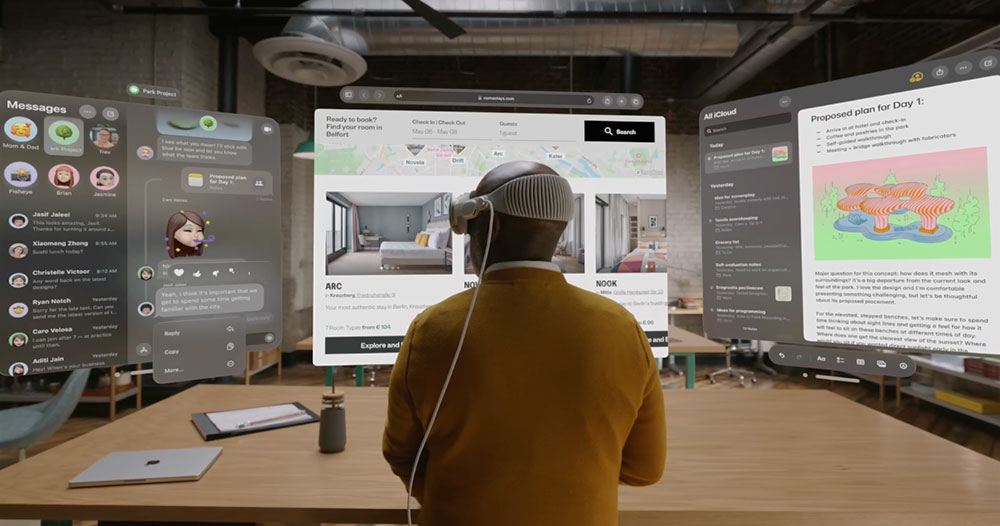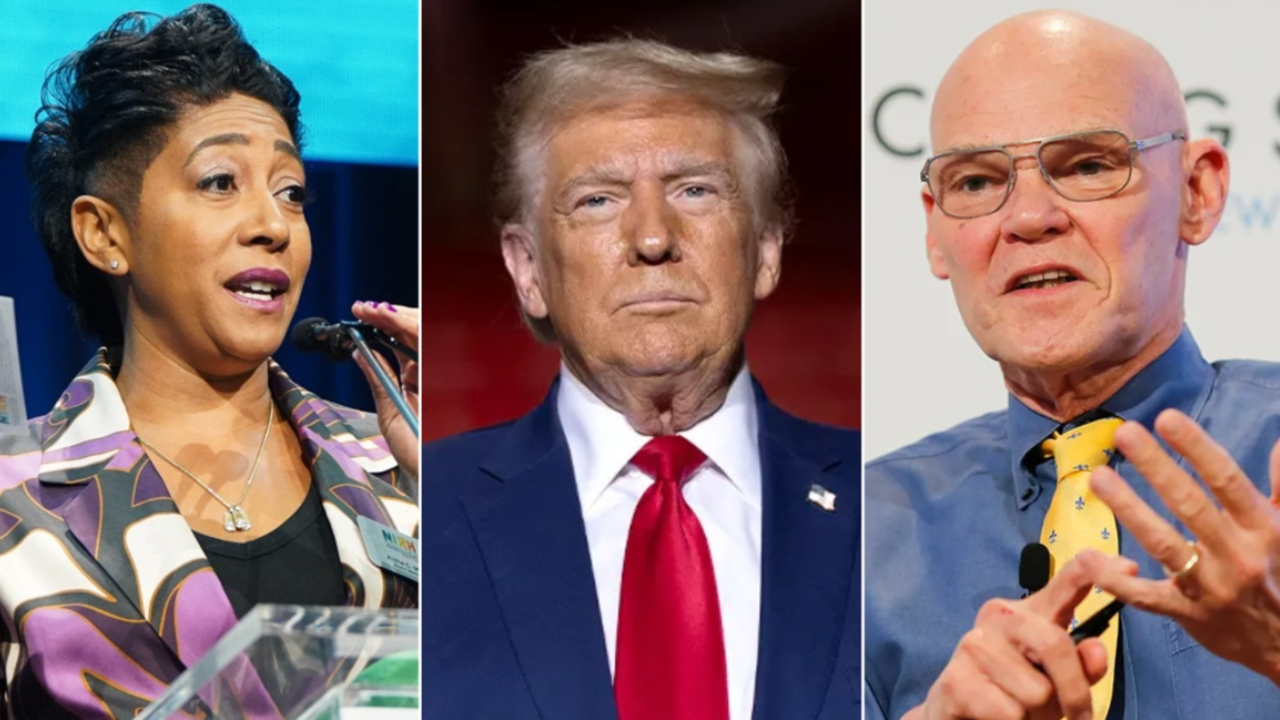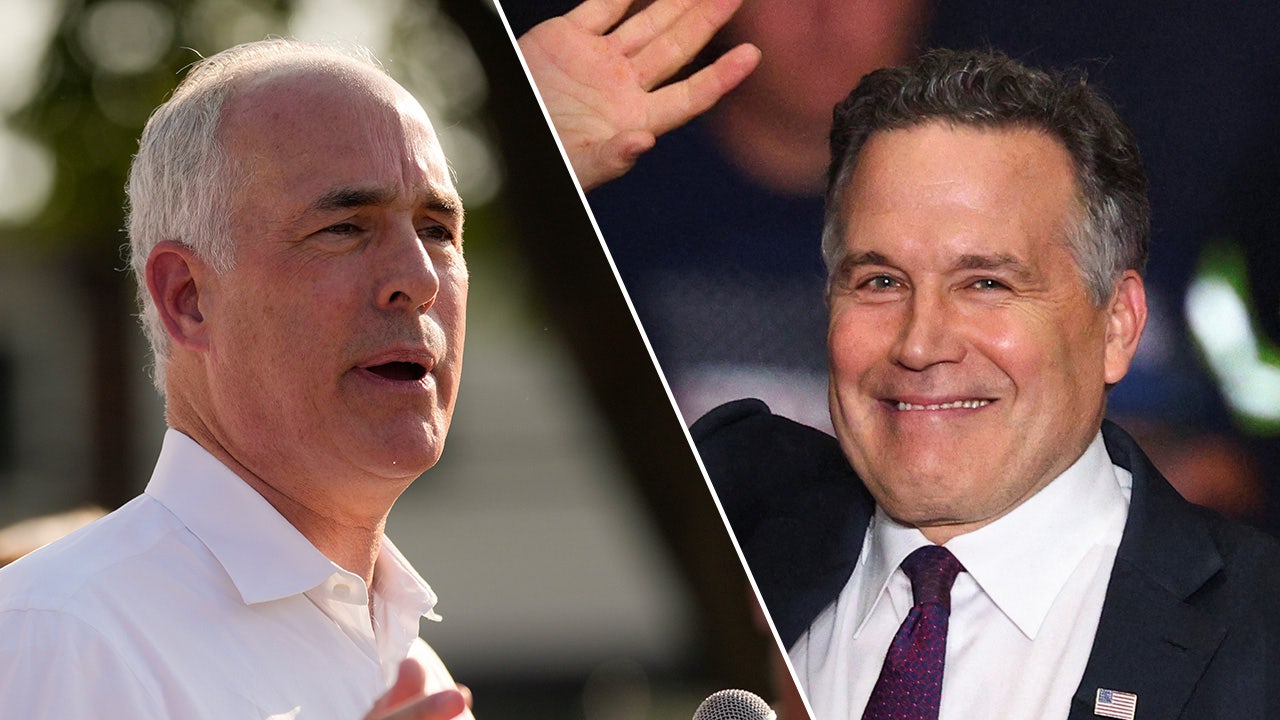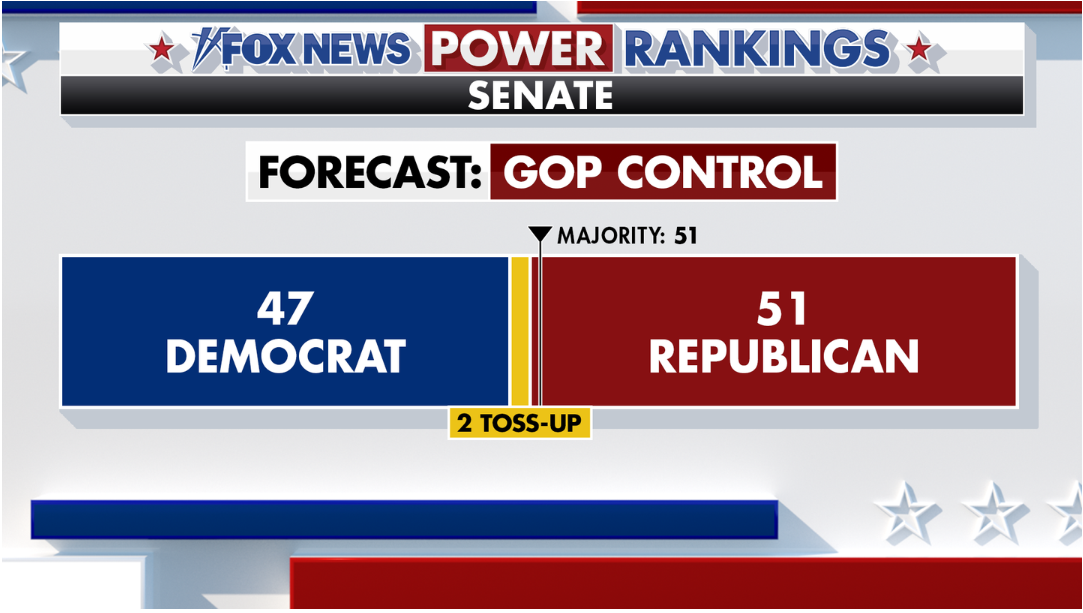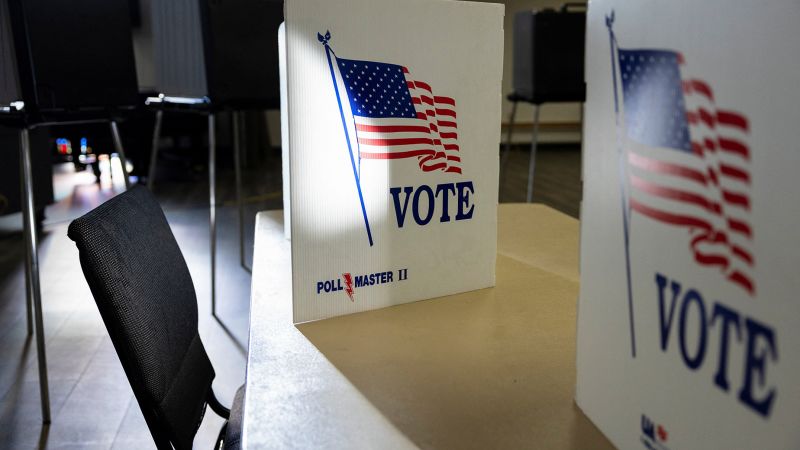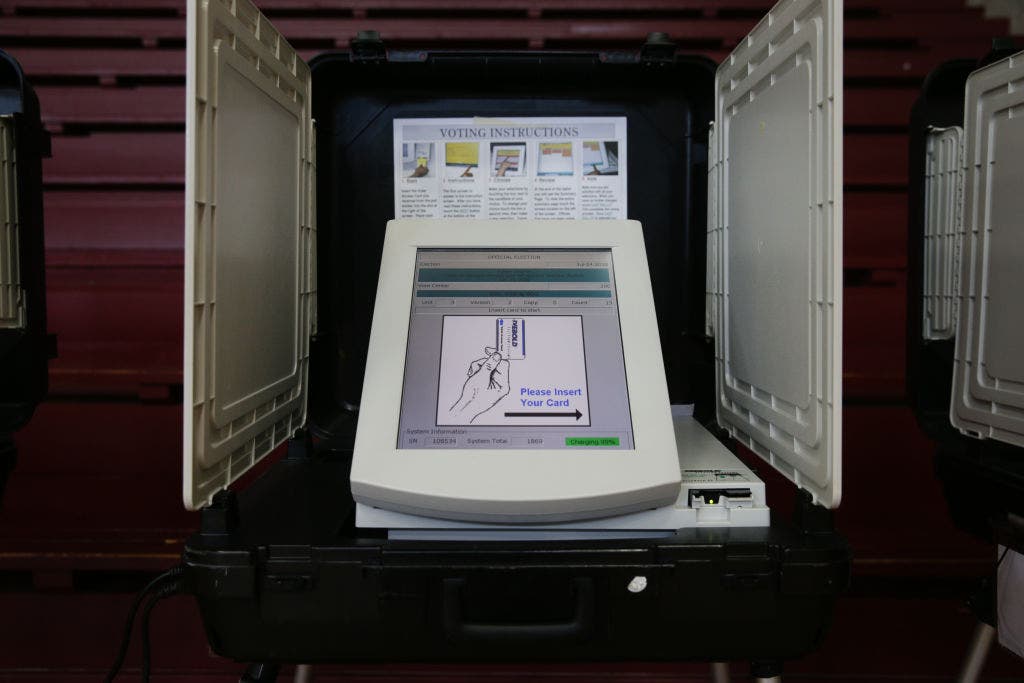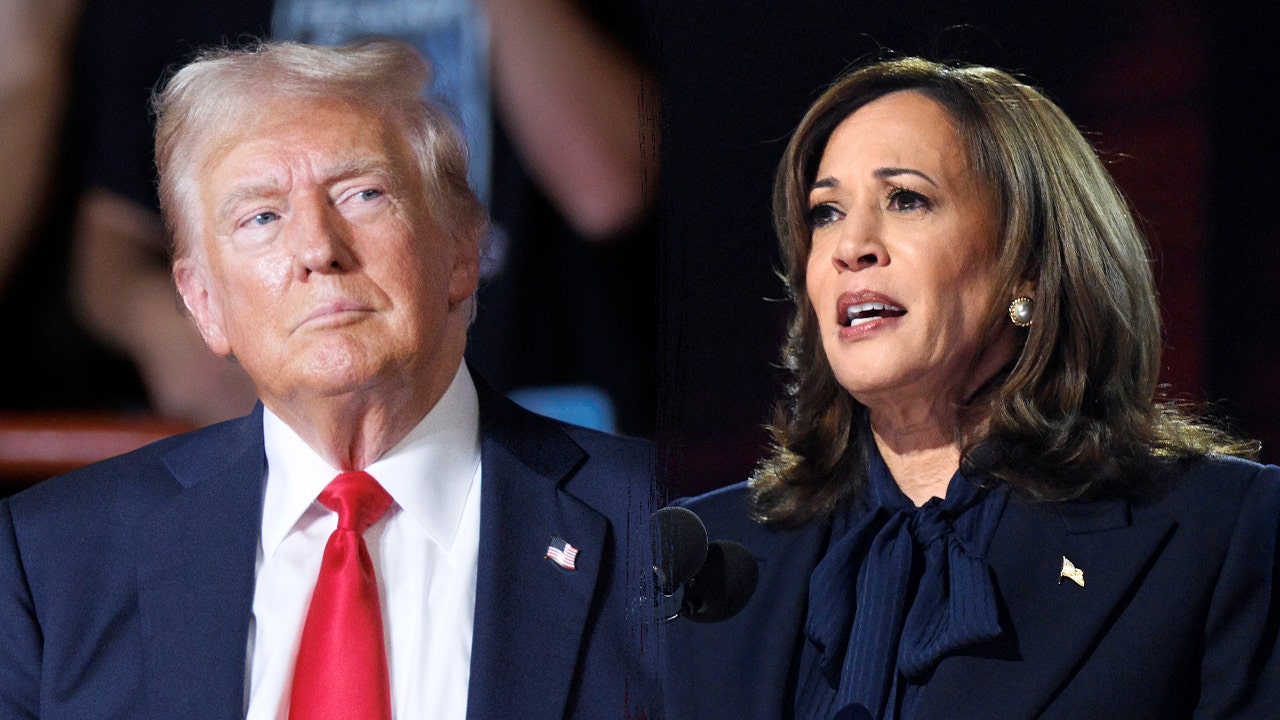There is one conspicuous weak spot in the formidable wall of support Vice President Kamala Harris has built among female voters. And that opening may represent former President Donald Trump’s best chance to tip the states that remain most likely to decide the razor-thin presidential race.
Even as Trump struggled with other groups of women in his 2016 and 2020 presidential races, exit polls and other analyses showed that he amassed a big lead each time among White women without a college education.
Those working-class White women loom as a critical, potentially even decisive, factor in Trump’s third White House bid. That’s partly because so many of them, polls show, are torn between personal disdain for Trump and discontent with the results of Joe Biden’s presidency, particularly over inflation and the border.
But it’s also because these women are especially plentiful in the three former “blue wall” states that still constitute Harris’ most likely path to an Electoral College victory: Michigan, Pennsylvania and Wisconsin. To win those states, which she is barnstorming every day this week, Harris doesn’t have to win most of those women – Democrats almost never do – but she does need to remain competitive with them.
“They are really tired of Trump, and they’d really like to move on, but they are also nervous about moving on, and they do think the economy was better for them under Trump,” said Democratic pollster Celinda Lake. As for Harris, Lake said, “They like she would bring everybody together, they like her empathy. … But they don’t feel that they know her that well.” The sum total of these contradictory impulses is that, “They are really torn,” Lake said. “They feel very insecure about these choices.”
One measure of how much Democrats prioritize these blue-collar White women is the massive voter contact program that American Bridge 21st Century, a party super PAC, is targeting at them. The group is spending about $140 million to try to reach 3 million women, predominantly White women without a college degree, just in Michigan, Pennsylvania and Wisconsin, the three states that Trump in 2016 knocked out of what I termed the “blue wall.”
“In general, the blue wall states are still the path of least resistance to 270” for Harris, said Bradley Beychok, a co-founder of American Bridge 21st Century. “But I think it’s pretty clear that women are the determinative demographic of this election cycle, and they have been the last few election cycles, so it’s not rocket science.”
American Bridge has pursued these blue-collar women through an extraordinarily long engagement that began in 2023 by regularly mailing them newspapers produced by an affiliated group. The effort has included multiple rounds of contacts and testimonial ads from former Trump voters delivered through every available platform, from television and digital to mail and streaming services. Beychok said one of the group’s strongest messages is reminding voters of the uncertainty and volatility that comes with Trump.
“If you show folks, gee you put this guy back in the White House and you’ll have a sense of unrest and disorder in your community … people say, ‘I don’t want that,’” Beychok said. Similarly, he added, “If Donald Trump is proud that he made good on his threat to ban abortion, and overthrow Roe v. Wade, and you know he’s an agent of chaos, then what [rights] will” he threaten next?
Beychok said the group’s guiding principle is that even small gains with these women can prove decisive across narrowly divided states. “We may not get to 50.1 with them, but if we run a program to get what is available to us … it can be just as effective,” he said.
In fact, winning a majority of these women has not been a realistic goal for Democrats. In exit polls dating to 1980, the only Democratic presidential nominee who carried even a plurality of White women without a college degree on a national basis was Bill Clinton in 1996. Democrats stayed close among these women again in the razor-thin 2000 race between George W. Bush and Al Gore. But while White women with a college degree have trended toward the Democrats in the presidential campaigns since then, the White women without a college degree have moved sharply in the opposite direction.
The Republican presidential nominees won just under three-fifths of these working-class White women in the 2004, 2008 and 2012 races, while Trump pushed his share with them over three-fifths in both the 2016 and 2020 races, according to the exit polls conducted by Edison Research for a consortium of media organizations including CNN. Other well-respected analyses of the 2016 and 2020 vote likewise showed Trump winning about three-fifths of these women, with the Democratic targeting firm Catalist putting Trump just below that threshold each time, and the Pew Research Center’s Validated Voters study putting Trump just underneath it in 2016 and just above it in 2020.

The GOP advantage in those national figures is inflated by its imposing advantage among these women in Southern states, where many of them are culturally conservative evangelical Christians who support the GOP in overwhelming numbers.
Critically for Democrats, in the pivotal battlegrounds of Michigan, Pennsylvania and Wisconsin, they have usually run a few points better with these women than they do nationally. In Barack Obama’s 2012 reelection victory, for instance, he only won about one-third of these women nationally, but he carried about 45% of them in both Michigan and Pennsylvania and won a narrow majority of them in Wisconsin, the exit polls found. By contrast, in 2016, Hillary Clinton, the exit polls found, stalled out at around 40% support from them in all three states, which contributed to her losing Michigan, Pennsylvania and Wisconsin by a combined margin of roughly 80,000 votes – and with them the presidency.
Compared with Clinton in 2016, Biden in 2020 posted a small but critical improvement among these women in Michigan and Wisconsin, contributing to his victories there, exit polls found. Biden ran only about as well as Clinton did with them in Pennsylvania, where he flipped the state primarily by vastly expanding on her margin in the heavily college-educated suburbs of Philadelphia.
Working-class White women in the former blue wall states may be even more central to Harris’ fate than they were to Biden’s. Even most Democrats acknowledge Harris may struggle to fully match Biden’s showing among almost all the major groups of male voters, especially White men without a college degree, as well as Black, Latino and younger men.
Because Biden won Michigan, Pennsylvania and Wisconsin by a combined margin of nearly 260,000 votes, Harris has a cushion to sustain some erosion among men. But Lake, like many other Democrats, believes that to win the three big Rust Belt battlegrounds – and for that matter, any of the swing states – Harris will likely need to run at least slightly better than Biden did among women. “She is going to have to do better with women,” Lake said flatly. “She has to make up for the fact that she won’t do as well with the men as he did.”
Polls show Harris has a good chance at improving over Biden’s 2020 performance with one group of women in all of the battlegrounds, including the former blue wall states: White women with at least a four-year college degree.
In the 2022 midterm – the first election held after the Supreme Court overturned the constitutional right to abortion – the Democratic gubernatorial nominees in Michigan, Pennsylvania and Wisconsin all ran notably better among these women than Biden had two years earlier. Recent surveys by Quinnipiac University showed Harris also drawing about two-thirds of these college-educated White women in all three of the former blue wall states, as did a recent Wisconsin poll by the Marquette Law School.
Harris’ position is less certain among women of color. Many polls have shown her facing some decline compared with 2020 among both Black and Latino women, but Democrats feel more confident about her ability to regain most of that ground than they do about her odds of undoing the shortfall with minority men, especially Latinos.
That leaves the working-class White women as the biggest wild card among female voters. “They are weighing a lot of things,” said Republican pollster Christine Matthews. “They could very well be deliberating up until the very last minute.”
Their choices will be especially important in the former blue wall states because the blue-collar White women are so numerous there.
In a new analysis shared exclusively with me, William Frey, a demographer at the nonpartisan Brookings Metro think tank, has calculated that these White women without a college degree will comprise a huge share of eligible voters in these pivotal states. According to his analysis of the latest census data, they will represent over one-fourth of adults eligible to vote in both Michigan and Wisconsin and almost exactly one-fourth in Pennsylvania. In all three states, he found they represent roughly as big a share of the eligible voting population as the blue-collar White men who are Trump’s strongest group and a bigger group of eligible voters than either White men or women with a college degree, or non-White men or women. Every vote from every group, of course, counts the same, but the blue-collar White women are a big enough bloc that even minuscule shifts in their preference, or turnout, could easily tip these precariously balanced states.
One word from Trump’s speech during a recent Wisconsin rally offers the best window on how he is pursuing these working-class White women. Talking about undocumented migrants, he declared, “They will walk into your kitchen, they’ll cut your throat.” Trump didn’t say immigrants would walk through the front door or into the living room. He specifically said they would come into a kitchen, where many women, particularly in working-class households, can easily envision themselves alone and vulnerable.

That was just one salvo in the barrage of messaging from Trump and his allies – in speeches and in advertising – that seeks to simultaneously trigger fears of crime from undocumented immigrants, portray Harris as too weak and too liberal to protect people from it, and to present himself as the strongman, in all senses of that word, who can provide that protection.
Jackie Payne is the founder and executive director of Galvanize Action, a liberal group that studies moderate White women, primarily those without college degrees. She acknowledges that Trump’s alarms have resonated among working-class White women, especially older ones. These women, she said, “express some of the fear around the border crisis; safety and security of their family is a top priority, and they identify the border crisis as a threat.”
But at the same time, Payne said, for many of these women, the vehemence and vitriol of Trump’s attacks on immigrants – the dehumanizing language and lurid accusations – is also triggering their greatest concern about him: that he’s too divisive, disruptive and chaotic.
Trump, Payne said, is “making the bet” that voters fearful about their safety will accept language and threats from him about immigrants that they consider “ugly” if they believe such vehemence to be “ the price of strength and protection.” But, she added, “At the same time, we see a revulsion and disgust at the way we are talking about other humans.”
Trump’s other big asset with these women is the economy. Many working-class White women live with very little economic margin, and pollsters agree the cumulative increase under Biden in the cost of living – notwithstanding inflation’s decline over recent months – has almost eclipsed any of his other economic accomplishments, such as the strong job market. “If you are just getting by and living paycheck to paycheck, that increase in basic groceries did a number on you and you are very focused on the economy,” said GOP pollster Jon McHenry.
McHenry said in his polling, significantly more of these blue-collar women say they were doing better economically under Trump than Biden. The latest national New York Times/Siena survey reinforces that finding: Among White women without a college degree, 54% said Trump’s policies had helped them personally, while a nearly identical 53% said Biden’s policies had hurt them, according to unpublished results provided by Siena. These women may feel a stronger personal connection with Harris than they did with Biden, McHenry noted, but poll results such as those make clear they don’t believe “that things are magically better because Joe Biden withdrew from the election. They are still feeling the effects of inflation; they are still not happy about the border.”
College-educated White women don’t give Biden’s policies great ratings in the Times/Siena poll either. But both Mathews and Payne point out that’s almost irrelevant to the decision for most of them: Trump himself provides the motivation for their vote. “When I look at White college women, I see them as motivated by choice, abortion and defeating Donald Trump,” said Matthews. “They are negatively motivated by him; they want him gone.”
In the 2022 exit polls, a solid majority of blue-collar White women also backed abortion rights across Michigan, Pennsylvania and Wisconsin, according to results provided by the CNN polling unit. The Democrats’ problem is not that these women don’t support legal abortion; it’s that fewer of them prioritize it as much as their female counterparts who are college-educated, single or younger.
“For White non-college women, even if they are offended by some of this stuff coming out of the Trump and Vance campaigns, the misogynistic comments, they are really focused on being able to feed a family of four on their income,” Matthews said. “They are cross-pressured and they don’t like what they are hearing. But they think he would do better on the economy and prices would go down, and that is the most pressing and relevant issue.”
In one of her campaign’s most notable achievements, Harris has become more competitive on economic issues; even if more voters still say they trust Trump to handle the macro-economy, she’s narrowed the gap in multiple polls on questions such as holding down costs or who cares about people like me. Her recent media offensive seemed aimed, above all, at buttressing those perceptions: across the many podcasts, town halls and talk show appearances the most powerful through line in her message seemed to be to say to women: I have lived your life, so I understand what public policy must do to make it easier and more secure – with everything from a restored child tax credit to Medicare coverage for home health care for more seniors.
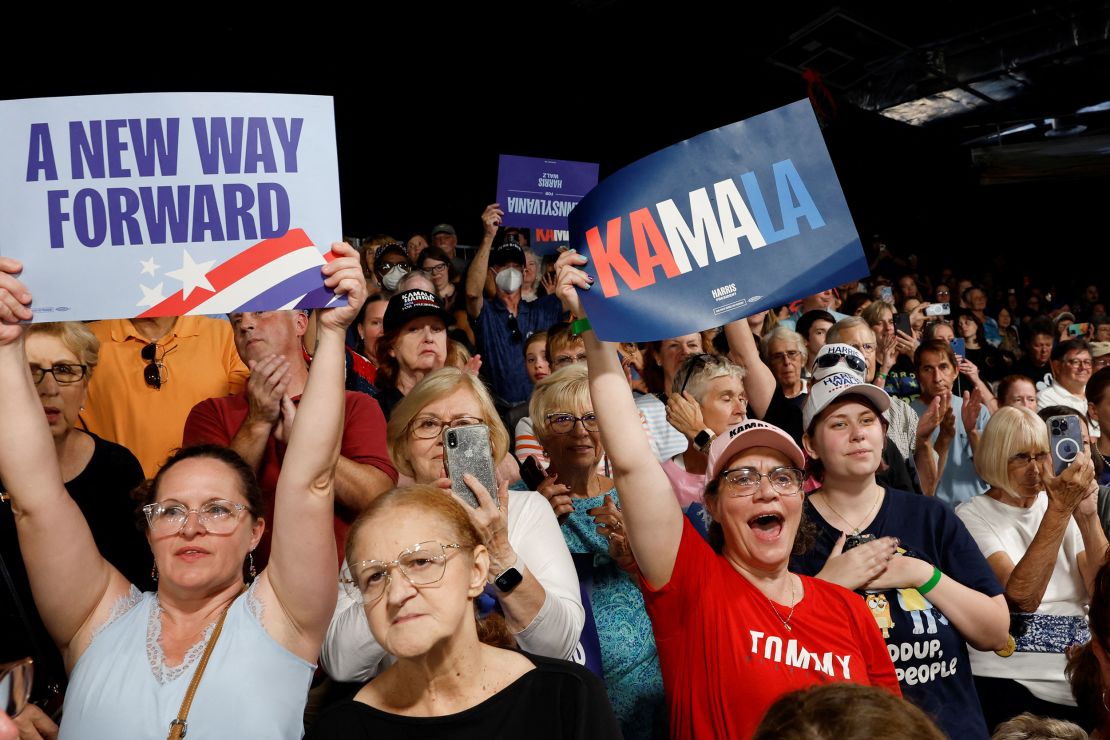
Payne said the key for Harris is to “at least draw even on ‘you can trust me to deliver for your family.’” If she can do that, Payne said, more working-class women will feel comfortable voting for “a vision of America that they want to raise their kids in. They don’t want conflict, they don’t like the polarization and division.”
The toughest question for Democrats is how Harris’ gender may affect the decisions of these working-class White women across the Rust Belt. To this day, some Democrats believe one key reason Clinton narrowly lost the former blue wall states in 2016 was that too many of these women remained uneasy with a female president, particularly around issues of security.
In polling this fall, Payne’s group found that Trump holds a big lead over Harris among White women who score high on what social scientists call “internalized sexism” – a tendency to defer to men – while Harris held a commanding lead among those who scored low on that measure.
A recent national Gallup Poll points in a similar direction. White women without a college degree were far more likely to identify Trump than Harris as a strong leader and someone who would display good judgment in a crisis, according to unpublished results provided by Gallup. Not only college-educated White women, but also the equivalent White men were much more likely than the blue-collar White women to express positive views about Harris and negative ones about Trump, Gallup found.
“I think there is a lot of implicit [gender] bias with” these working-class White women, Lake said. “And given the short time frame, I’m not sure we’re on top of it. They have competing notions of Trump. On the one hand, he’s chaotic, unstable, he’s definitely looking older, he is dividing people, he is causing instability in communities. But on the other hand, they think he’s a strong man and they like strong men.”
How a few thousand conflicted and ambivalent working-class White women in Michigan, Pennsylvania and Wisconsin sift through these competing views may decide the states that remain the most likely to determine the next president.
Read the full article here




